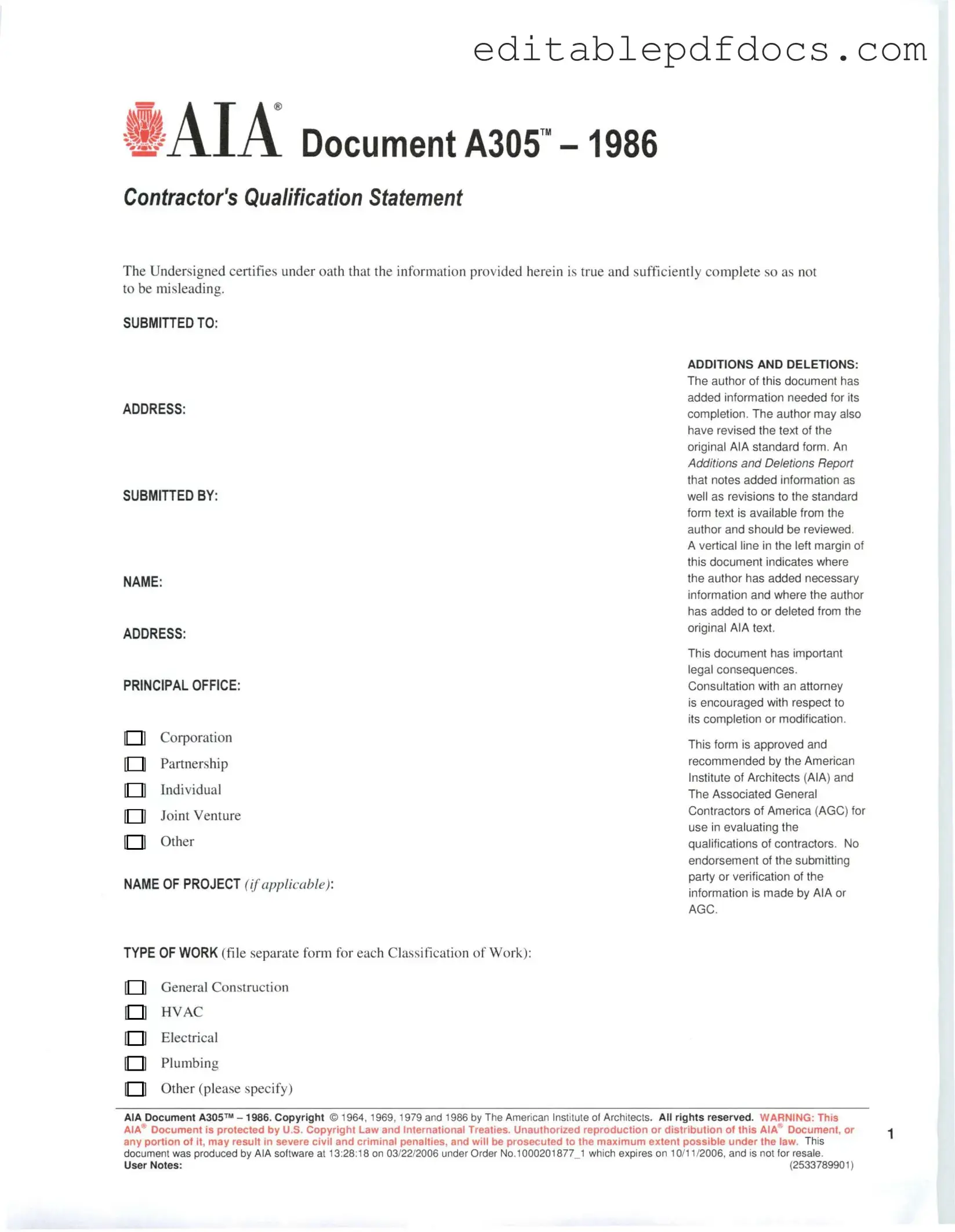Filling out the AIA A305 form can be a straightforward process, but many people make common mistakes that can lead to delays or complications. One frequent error is failing to provide complete information. Each section of the form is important, and leaving out details can create confusion or result in the rejection of the application.
Another mistake is neglecting to update financial information. The A305 form requires current financial statements. Using outdated figures can misrepresent the applicant's financial health and lead to unfavorable outcomes.
Many applicants also overlook the importance of signatures. All required parties must sign the form. A missing signature can halt the entire process, causing unnecessary delays.
Some individuals do not carefully read the instructions. Each section has specific requirements. Ignoring these can lead to incomplete submissions or misinterpretations of what is needed.
Another common error involves providing inconsistent information. If the details in the A305 do not match other documents, it raises red flags. Consistency is key to maintaining credibility.
People often forget to include supporting documentation. The A305 form may require attachments that provide additional context or proof of information. Failing to include these can weaken the application.
Additionally, applicants sometimes rush through the form. Taking the time to review each section carefully can prevent mistakes. A thorough review can catch errors before submission.
Some individuals do not seek assistance when needed. If there are uncertainties about how to fill out the form, consulting with a professional can clarify the process and ensure accuracy.
Lastly, many fail to keep copies of their submissions. Keeping a record of what was sent can be crucial if questions arise later. This practice helps track changes and provides a reference if needed.
